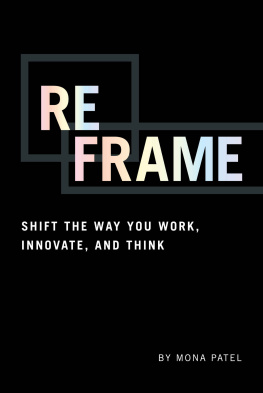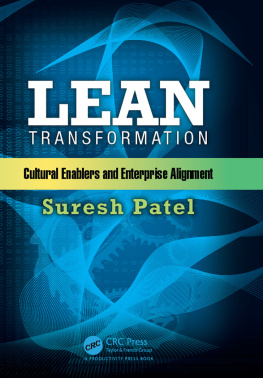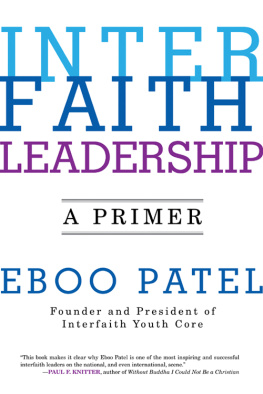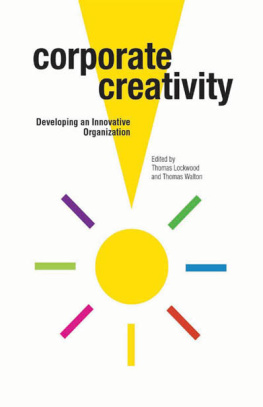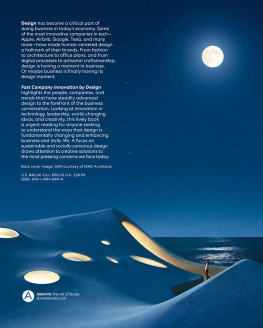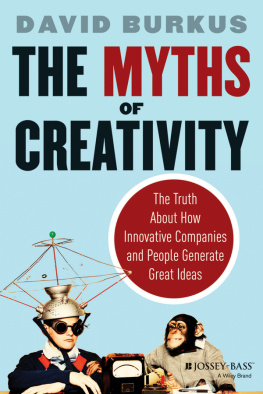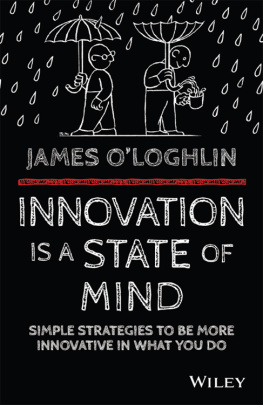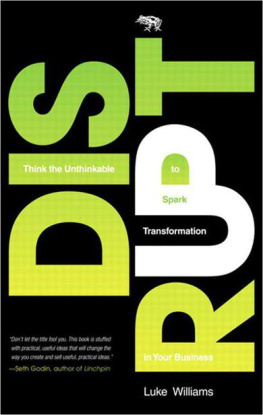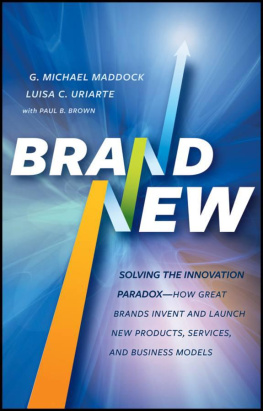Reframe
Shift the Way You Work, Innovate, and Think
Mona Patel
Contents
C opyright 2015 Mona Patel
All rights reserved.
ISBN: 978-1-61961-318-8
T o all the amazing motivators in my lifeespecially my boys.
Introduction
I n spring 2009 , I was sitting next to my brother on my parents couch. We were having what seemed like the hundredth conversation about starting my own business. For a decade, Id been working in user experience, which is, essentially, understanding how people think and behave and then designing products and experiences with that at the forefront.
As a design researcher, my goal was to help my client get more customers to understand, use, and enjoy their interactions with that clients products, services, and/or brands. To do that, I studied human motivation: What drives people? What persuades them to take an action, especially regarding new digital devices? What makes people change their behavior, or even better, what causes them to behave in ways that benefit others?
My job was to manage teams who interviewed and observed users of various products and to report back to the company (in the form of designs) how to better meet the customers needs. I worked on more than 100 projects, including redesigning websites, web applications, a bunch of medical devices, and consumer products, and I even helped plan the design of retail stores, trading floors, hospitals, museums, and technologically advanced classrooms. When we were successful, we could point to money saved or additional money earned as a result of designing better experiences for their customers, which made clients (mainly from large companies) come back for more.
Fundamentally, my role as a consultant to those clients was to solve their problems. Sometimes, the problem had already been solved, and they just needed someone to validate it, but they trusted me to solve the problem and come up with a better solution. The more problems I solved, the better I felt about myself and the more confident I was pursuing more complex problems. The warm glow of success gave way to the white-hot ambition for the next, bigger challenge. In a pure, beautiful way, I recognized that problem solving fed into the human need for contribution, living a life in which we step outside of ourselves and feel like we have meaning or purpose. We belong to a community and as humans, thats important. Thinking I can do this; I need to do this led me to want to solve bigger and tougher problems. It moved me from thinking about what made a customer click on a BUY button to what enabled that customer to feel like a responsible, relevant member of a community. Helping people understand the importance of taking medicine so they are healthier or educating them on what it means to be financially responsible: these types of solutions impact peoples happiness and livesnot just my clients bottom lines.
Unfortunately, I rarely had the opportunity to implement solutions on that kind of scale. Over those 10 years, I had developed a number of ideas about what worked well and what did not in what were now my areas of expertisemarket and user research, as well as visual and interactive designbut life in the agency worldor any company, for that matterjust didnt offer the kind of autonomy needed to think bigger like I wanted. I wanted more independence. I took inventory of my life and realized that there were a few dreams I was not chasing, including starting my own company.
This was not news to my family. I had been complaining to them about my predicament for a while. Yet, I had so many excuses for why I couldnt start a business: I didnt know anything about running a business; we were in a recession, and clients were not spending on design and research; my husband had just started a company of his own, so we didnt have a stable income; I wanted to have kids, so we really needed the medical benefits, as well as the financial stability; I made a solid six-figure salary, managed a great group of people, and the company where I worked believed in me and gave me more freedom than most people had; I didnt know where to begin or what LLC even stood for; and I didnt know what kind of company I wanted to start. The list went on. It just made no sense to start a company.
Luckily, decisions arent always made based on sense and rationality. Every excuse I listed was factually true, but deep down, I still didnt feel right. I felt stuck. My brother sensed my dissatisfaction and because he had seen my presentations overheard client calls, he called me out on being a chicken and a bratty diva. He pointed out that I had been promoted every year, so any reservations about not yet knowing enough were clearly contradicted by the facts on the ground. He pointed out that clients seemed drawn to my authenticity and drive to truly help them solve their design problems. My straight shooting can get me into trouble sometimes, but many clients appreciated it, and he felt I could turn that into a marketable brand that would ignite my passion for this field and help to design a more beautiful, useable world. He was right.
I wanted change, but I didnt want to change. I had an inner drive that did not align with my actions and decisions, and I was complaining about it rather than doing something about it. I needed to reframe the way I thought.
Maybe this sounds familiar. Taking a risk can be scary. It can be a stupid decision. It can be hard. Its so much easier to just complain and not actually do anything. Maybe it came up in something like learning to ski, cycling across the country, switching your career, or trying an aerial yoga class. There is probably a whole list of things you want to do but havent tried yet.
Heres my trick: I replace What if I cant? with What if I dont? and I get the push that I need to jump and see what happens. What if I dont face this fear? How will I feel? Will I be satisfied? I needed to reframe problems as an opportunities to do something great.
My family is full of entrepreneurs; theyre big thinkers and doers. They are also my biggest fans. For every excuse I came up with, they came up with a counter excuse. They talked back to my fear and pushed me from What if I cant? toward What if I dont? That day, with their prodding me to jump and my brothers explicit encouragement, the excitement and drive trumped the excuses, and off I went. I was ready.
But wait, where was I jumping to? What did I want to do with my life?
I wanted to eradicate bad design from the world. I strongly believed (and still do) that design is a medium to influence people. Design is not just about how something looks. It includes the functional component of how something works and the emotional component of how it makes people feel. It is about finding barriers or pain points in an experience and attacking them to make things easy and simple for users. I had designed e-commerce sites to make people buy more, health sites to make people register for online programs, and banking sites that encouraged people to sign up for a credit card. The right design could persuade people to behave differently. So what? Designing experiences so that people would click on certain buttons just didnt feel like enough.
Quickly, I realized that even though I loved solving other peoples problems, what I really loved was being surrounded by other problem solvers, inspiring them to take action, and feeling inspired in return. When I felt stuck, I had allies to help unstick me. They reminded me of what was important. They helped me brainstorm ideas and options. They helped me overcome my fears.
So, I decided to create a company that helped people, starting with designers, tap into their own potential to change the products they were working on by helping them tackle their mental barriers, including fears and excuses. Rather than clients calling on an agency to do the work for them, I wanted to be an ally to the in-house design teams, encouraging their designers to come up with crazy ideas that they could own and follow through on.

